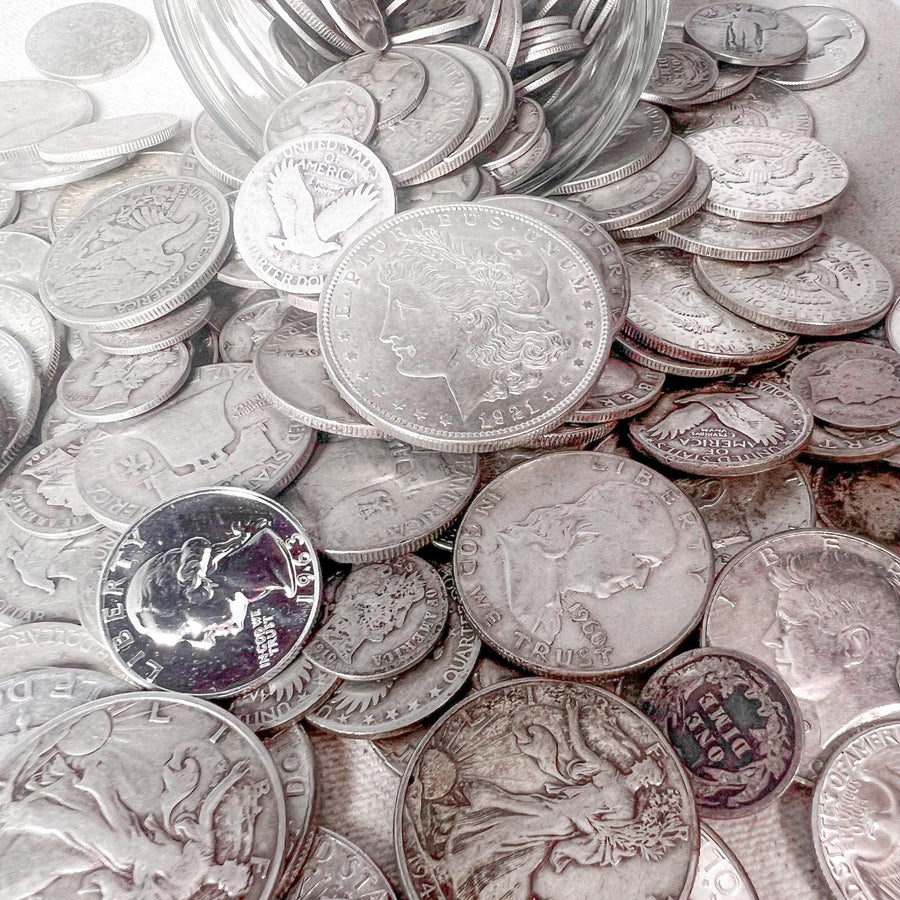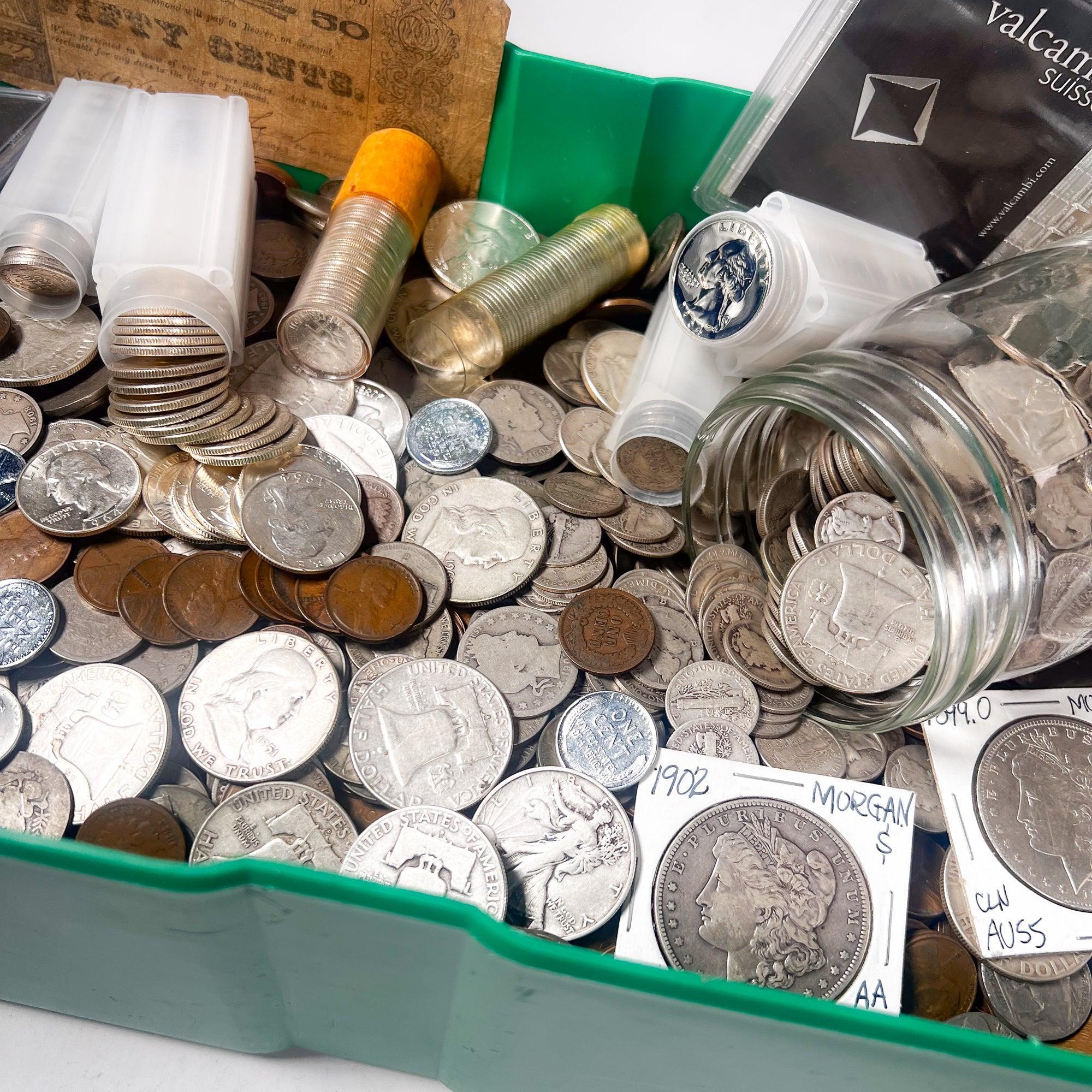Mastering 90% Silver U.S. Coins: A Strategic Acquisition Guide
Navigating the precious metals market can be a game-changer for savvy investors, especially when it comes to acquiring tangible assets like 90% silver U.S. coins. Often overlooked, these coins offer a unique blend of intrinsic value and historical significance, making them a cornerstone for diversifying portfolios.
However, success lies in avoiding common pitfalls and maximizing value through informed decisions. In this guide, we’ll explore Best Practices for Buying 90% Silver U.S. Coins: Maximizing Value & Avoiding Pitfalls, offering actionable insights on reputable sources, smart pricing strategies, and secure storage to ensure long-term profitability.
Understanding 90% Silver U.S. Coins: The Foundation of Your Investment
Before diving into acquisition strategies, let’s break down what makes 90% silver U.S. coins a compelling investment and why they’re a go-to for collectors and investors alike.
What Are 90% Silver U.S. Coins?
Known as junk silver (a term that understates their true worth), 90% silver U.S. coins are pre-1965 circulating U.S. coinage made of 90% silver and 10% copper. Their value stems primarily from their silver content rather than numismatic rarity. The U.S. Mint used silver in coins for centuries, but the Coinage Act of 1965 phased out silver from dimes and quarters due to rising silver prices, with half-dollars following suit by 1971. This shift turned these coins into a store of value.
Common denominations include:
-
Dimes: Mercury Dimes (1916–1945) and Roosevelt Dimes (1946–1964)
-
Quarters: Standing Liberty Quarters (1916–1930) and Washington Quarters (1932–1964)
-
Half-Dollars: Franklin Half-Dollars (1948–1963) and Kennedy Half-Dollars (1964 only)
Each $1.00 face value of these coins contains approximately 0.715 troy ounces of pure silver, a key metric for calculating their intrinsic worth.
Why Invest in 90% Silver?
Investing in 90% silver offers strategic advantages:
-
Intrinsic Value: Unlike fiat currency, these coins have tangible worth tied to their silver content, making them a hedge against inflation and economic uncertainty.
-
Divisibility: Smaller denominations (like dimes) allow for flexible transactions, unlike larger bullion bars.
-
Accessibility: Widely available and affordable, they’re ideal for both new and seasoned investors.
-
Liquidity: Their recognizable form and consistent silver content make them easy to buy or sell.
Demystifying Value: Pricing 90% Silver Coins
Understanding the true value of 90% silver coins requires mastering pricing components like spot price, premiums, and potential numismatic value.
Spot Price and Premiums
-
Spot Price: The current market price of silver per troy ounce, fluctuating based on global supply and demand. It’s the baseline for valuing 90% silver coins.
-
Premiums: The additional cost above the spot price, covering dealer overhead, profit margins, and market dynamics. Premiums vary based on:
-
Dealer Costs: Rent, salaries, and security impact pricing.
-
Supply and Demand: High demand or low supply can increase premiums.
-
Coin Condition: Less-worn coins may fetch slightly higher premiums.
-
Payment Methods: Credit card payments often carry higher fees than wire transfers or cash.
-
Pro Tip: Compare premiums across dealers to ensure you’re getting a fair deal. Transparent pricing is a hallmark of reputable dealers like Midwest Precious Metals Exchange.
Calculating Melt Value
The melt value reflects the silver content’s worth. Use this formula:
Melt Value = (Face Value / $1.00) x 0.715 troy ounces x Current Silver Spot Price
Example (Spot Price = $28.00/oz):
-
$10.00 face value roll of dimes:
Melt Value = 10 x 0.715 x $28.00 = $200.20 -
$50.00 face value box of quarters:
Melt Value = 50 x 0.715 x $28.00 = $1,001.00 -
$100.00 face value bag of half-dollars:
Melt Value = 100 x 0.715 x $28.00 = $2,002.00
Beyond Melt Value: Numismatic Potential
While most 90% silver coins trade near their melt value, some carry numismatic value due to rarity or condition. Look for:
-
Key Dates: E.g., 1916-D Mercury Dime or 1927-S Standing Liberty Quarter.
-
Varieties/Errors: E.g., 1942/1-D Mercury Dime overdate.
-
High-Grade Coins: Uncirculated coins (MS-65 or higher) may command premiums.
For suspected high-value coins, consider professional grading by NGC or PCGS to authenticate and maximize resale value.
Navigating the Market: Choosing Reputable Dealers
Where you buy your 90% silver is as critical as what you buy. Here’s how to select trustworthy dealers and acquisition channels.
Identifying Reputable Dealers
Look for these credibility signals:
-
BBB Accreditation: Check for A+ ratings on the Better Business Bureau.
-
Industry Memberships: Affiliations with the American Numismatic Association (ANA) or Industry Council for Tangible Assets (ICTA) indicate professionalism.
-
NGC/PCGS Certification: Authorized dealers, like Midwest Precious Metals Exchange, meet high standards.
-
Transparent Pricing: Clear breakdowns of spot price and premiums are a must.
Red Flags: Avoid dealers with high-pressure tactics, inflated claims, or vague contact information.
Acquisition Channels
Online Dealers
-
Pros: Wide selection, competitive pricing, 24/7 convenience.
-
Cons: Shipping risks, inability to inspect coins, scam potential.
-
Best Practices: Use HTTPS websites, verify shipping insurance, and check reviews on Trustpilot.
Local Coin Shops
-
Pros: Hands-on inspection, immediate possession, relationship-building.
-
Cons: Higher premiums, limited inventory.
Coin Shows & Auctions
-
Pros: Unique finds, potential deals.
-
Cons: Requires due diligence on auction terms and coin authenticity.
Peer-to-Peer Sales
-
Pros: Possible low premiums.
-
Cons: High risk of counterfeits or scams. Always meet in public, verify authenticity, and use secure payments.
Strategic Acquisition: Smart Purchasing Tips
Maximize value with these strategies:
-
Monitor Spot Prices: Set price alerts on platforms like Kitco to buy during dips.
-
Dollar-Cost Averaging: Spread purchases over time to reduce volatility risk.
-
Bulk Purchases: Full $1,000 face value bags often have lower premiums than smaller lots.
-
Seek Better-Quality Junk Silver: Less-worn coins (e.g., Franklin halves) may fetch slight premiums.
Avoid Pitfalls:
-
Don’t overpay for premiums without numismatic justification.
-
Steer clear of “too good to be true” offers.
-
Always verify coin authenticity using weight, specific gravity, or ping tests.
Protecting Your Investment: Secure Storage
Safeguarding your 90% silver is crucial for preserving value.
Storage Options
-
Home Storage: Use fireproof, waterproof safes and inert plastic tubes to prevent tarnishing. Conceal storage locations for added security.
-
Third-Party Depositories: Specialized vaults offer audited storage and comprehensive insurance but come with fees.
-
Bank Safe Deposit Boxes: Secure but limited by banking hours and minimal insurance.
Insurance
-
Homeowner’s Policies: Often cap precious metals coverage at $1,000–$2,500. Add a rider for larger collections.
-
Dedicated Policies: Tailored for precious metals, offering comprehensive protection.
-
Inventory Documentation: Keep detailed records, photos, and receipts for insurance claims.
Long-Term Planning
-
Regular Inspections: Check for tarnishing or packaging issues.
-
Tax Implications: Consult a tax professional, as silver sales may incur capital gains taxes.
-
Exit Strategy: Plan for liquidation through reputable dealers with buyback programs.
Take the Next Step with Confidence
Investing in 90% silver U.S. coins is a strategic move to hedge against economic uncertainty while building a tangible asset portfolio. By choosing reputable dealers like Midwest Precious Metals Exchange, verifying authenticity, and securing your investment, you can maximize value and minimize risks. Ready to start?
Explore trusted sources, calculate melt values, and build your silver portfolio with confidence today!
Disclaimer: Always consult a financial advisor before making investment decisions. Silver prices are subject to market fluctuations.












